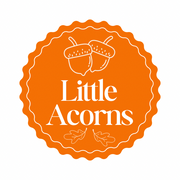What are schemas?
What are schemas?

As your small child grows you have probably come across the term schemas, but what is a schema?
Schemas are repeated patterns of behaviour that children will go through in order to learn about and explore their environment. These schemas (patterns of behaviour) are present from birth. You will have seen your little baby sucking or grasping objects repeatedly until they master it or until they put the two together to form an action (grasp rattle, bring to the mouth and suck)
As your child gets older the number of schemes will increase in both number and complexity. These phases will become more intricate and will continue into adulthood.
Why are schemas important?
Schemas play a crucial role in learning as they can influence how quickly and easily we learn new information. Schemas enable new information to be classified and categorised by comparing new experiences to existing schemas and this will help your child learn information more quickly and easily. Schemas also allow us to think quickly, even under conditions when new information is coming in rapidly, as we can assimilate this new information more automatically.
As a parent it can help you understand your child’s behaviour. You may have read that at your child’s age they love playing with certain toys, but when you buy it or make it for them, they pay very little notice to it. More often than not, it is probably that your child is not currently interested in the schema that toy represents. They may in fact just like to put items into and out of a container or throw their toys around the room. Parents often worry that their child is being ‘naughty’ when they are only practicing the trajectory schema. Instead of worrying about your child’s behaviour, once you recognise the schema you can plan fun activities that match your child’s interests.
Activity Ideas for common schemas
Transporting Schema - Children will either move objects from one place to another either by carrying them in their hands or using a container or a pocket. Children also like to move themselves from place to another
• Have lots of containers, bags, trolleys, backpacks etc
• Use toys such as diggers, tractors, wheelbarrows and encourage movement
• Have blocks they move from place to another
• Encourage ‘tidy up time’ and get your child to move their toys back to their storage place.
Connecting Schema - Linking different objects together and connecting items
• Have blocks, ribbons, wool, stickle bricks, Lego that can all be connected or lined up
• Put together train tracks or long lines of toys
• Build a tower and then knock it down again
• Threading beads
Rotational Schema – turning things around, opening a closing taps, turning themselves around and upside down, rolling around
• Using hoops for spinning around (themselves and the hoops)
• Play with wheeled toys
• Make cakes and food using a mixing spoon
• Use construction toys: putting nuts and bolts together, using spanners and screwdrivers.
Trajectory Schema - patterns of movements on along the horizontal or vertical. Horizontal trajectory - pushing, kicking, throwing; vertical trajectory - dropping things or putting objects in and out of containers
• Make pom poms or paper aeroplanes and throw them
• Build block towers and knock them down
• Roll balls along the floor into containers or partners hands
• Drop toys onto the floor – perhaps different weighted ones
• Push cars, trains, prams, bikes
Enveloping/enclosing schema – sitting in boxes, wrapping blankets or clothes, building dens; fencing toys together or holding onto armfuls
• Have a dressing up box
• Wrap up presents
• Build dens in the garden or in the lounge
• Bandage poorly dolls or toys (doctors)
Transforming schema – mixing substances together (messy play)
• Make potions with water, paints etc.
• Play with mud and sand and water in the garden
• Let them help you make cakes
Positioning/Orientation Schema – positioning toys in a certain way or positioning their bodies
• Line up toys or objects in a row (shells or pebbles from the beach etc)
• Use cushions to make a bus and line up the seats
• Lie on the floor to play with toys
• See the world through your legs in the down dog position

